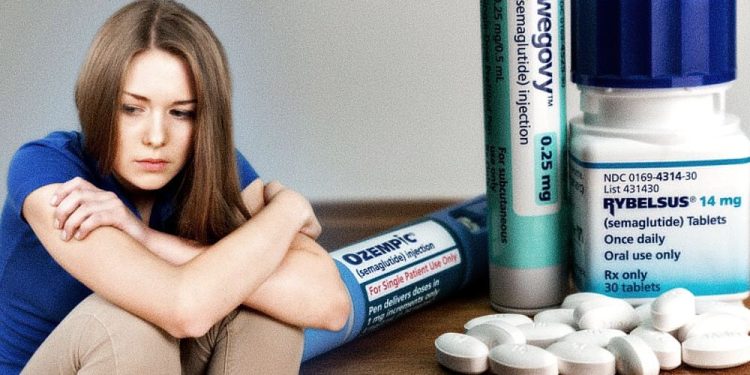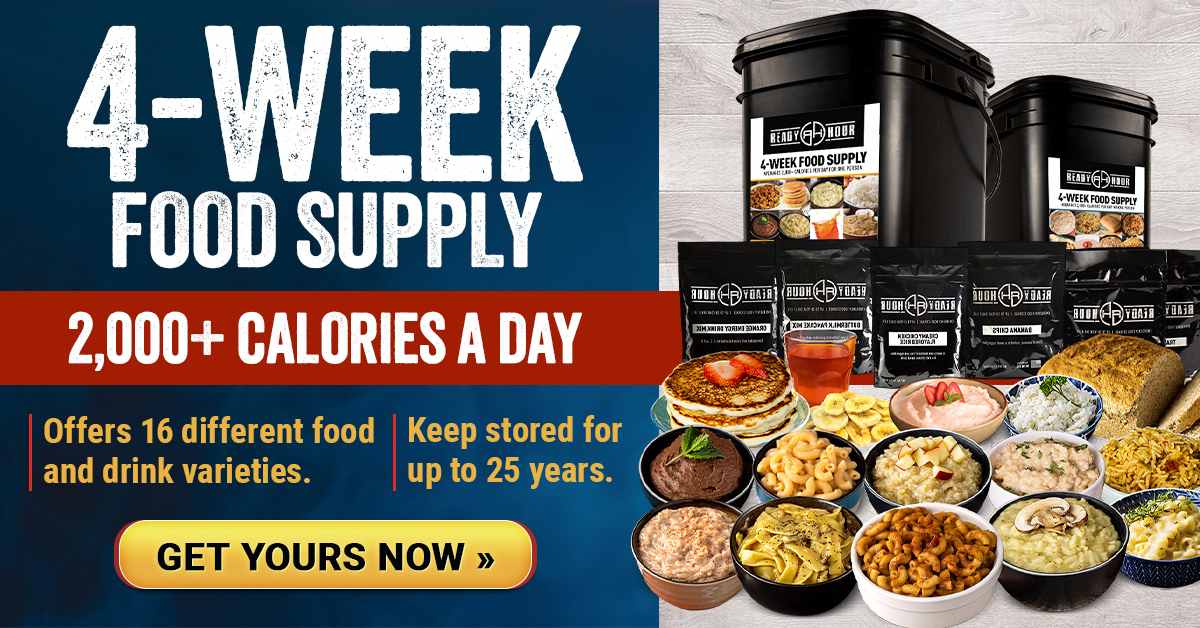(The Defender)—People who take the popular weight-loss drugs like Ozempic and Wegovy are 45% more likely to have suicidal thoughts than people taking other drugs, according to a study published Tuesday in the Journal of the American Medical Association (JAMA).
Researchers from the Zucker School of Medicine in New York reviewed a World Health Organization global database of adverse drug effects between November 2000 and August 2023.
They compared reporting rates for semaglutide — the active ingredient in the blockbuster drugs — to other similar weight-loss drugs and all drugs in the database. They found that semaglutide was associated with “disproportionately increased reporting of suicidality.”
“Authorities should consider issuing a warning to inform about this risk,” the authors concluded, particularly given the increasing off-label use of the drug. They said in half of the cases where suicidal thoughts occurred, the drug was being taken off-label.
The signal “warrants urgent clarification,” they added.
The researchers also found a higher risk for suicidal thoughts among people on antidepressants or benzodiazepines, likely prescribed for depression or anxiety, who were also taking semaglutide.
They recommended that physicians who prescribe semaglutide inform patients of the risk and assess their psychiatric history and mental state before prescribing the drug.
‘If you want to check if a drug causes suicidality, you have to interview people’
In more than half of the cases the researchers studied, suicidal thoughts stopped when people stopped taking the drugs.
Dr. David Healy, a psychiatrist who was not involved in the study, told The Defender this was one of the more significant findings. The overall number of suicidal thoughts reported was small, he said, but the proportion of cases where the thoughts stopped when the drug was stopped was high.
This is telling, he said. However, he said investigations must happen at the clinical level to determine causality. “If you want to check if a drug causes suicidality — you have to interview people,” he said.
The researchers also found a slight increase in reports of suicidal ideation in the database for the earlier version of the weight loss medication, liraglutide — sold under the brand name Victoza and Saxenda.
Liraglutide is in the same broader class of glucagon-like peptide-1 (GLP-1) receptor agonist drugs as semaglutide.
Accompanying commentary by authors Francesco Salvo, M.D., Ph.D., of the Université de Bordeaux and Jean-Luc Faillie, M.D., Ph.D., of the Université de Montpellier in France, affirmed that GLP-1 receptor agonists should be prescribed with “great caution in patients with a history of depression or suicidal attempts.”
They added that the drug should be discontinued if new depression symptoms occur when on the drugs.
-
Learn the TRUTH about Gold IRAs and how most precious metals companies play dirty.
FDA and EMA claim no evidence of link
The injectable prescription drugs were originally developed to manage blood sugar levels in the treatment of Type 2 diabetes, but they became wildly popular over the last several years for their ability to help people lose weight.
GLP-1 receptor agonists are chemicals derived from lizard venom that can change people’s metabolism and eating behaviors as long as they continue to take the drugs.
When people stop taking the drugs, they typically regain most or all of the weight they lost.
The drugs have been touted by Oprah Winfrey and other celebrities as a key to overcoming the obesity epidemic.
Mainstream health publications like StatNews have advocated for increasing access to the expensive obesity drugs in the name of racial justice, and there has been growing pressure for the drugs to be covered without restrictions by Medicare.
And medical organizations like the American Academy of Pediatrics rushed to recommend the drugs for children as young as 8, just weeks after they were approved by the U.S. Food and Drug Administration (FDA) for children.
And in October 2023, Novo Nordisk announced that it is testing semaglutide in children as young as 6.
The drugs are new to the market. Novo Nordisk, the Danish pharmaceutical company that makes Ozempic, Wegovy and Saxenda only published its clinical trial showing weight loss effects of semaglutide in February of 2021 and the FDA approved Wegovy for weight loss in June 2021.
Between 2020 and 2023, GLP-1 receptor agonists use increased by 594% in young people, particularly among women.
Despite the hype, serious concerns have been raised about the safety of the drugs. They’ve been linked to cancers in the digestive system, thyroid cancer, stomach paralysis, a wide range of other gastrointestinal disorders, among other issues and the drugs pose a serious but little-known risk for pregnant women.
Last year, suicidal ideation linked to Ozempic and Saxenda, and one case of self-harm ideation linked to Saxenda were reported in Iceland, which led to an investigation by the European Medicines Agency (EMA). Similar reports were also made to the FDA.
The EMA reported in April that its follow-up investigation, which reviewed non-clinical studies, clinical trials and postmarketing surveillance data, “does not support a causal association” between GLP-1 drugs and suicidal or self-harm thoughts.
The FDA reported in January that its investigation of reports to the FDA Adverse Event Reporting System (FAERS) showed no safety signal for the drugs and that it had a meta-analysis underway.
A study published in Nature in January found no link between the drugs and suicidal thoughts
The EMA continues to maintain that no warning is warranted, but in U.S. labeling, the product information for semaglutide does list thoughts of suicide as a possible side effect.
Novo flagged “several limitations” of the new study and maintained that it will continue to work with the FDA and other regulators to monitor the safety of the drugs, Fierce Pharma reported.
“We stand behind the safety and efficacy of all of our GLP-1RA medicines when they are used as indicated and when taken under the care of a licensed healthcare professional,” the spokesperson said. “The known risks associated with use of these medicines are reflected in their current FDA- and EMA-approved product labeling.”
Suicidal thoughts and suicides occurred in clinical trials
Despite the EMA and FDA’s continued claims of safety for GLP-1 agonists, in the clinical trials for liraglutide there was a higher incidence of suicidal thoughts versus the placebo, although the number was not statistically significant, the Japanese journal MedCheck reported in its overview of the drug, recommending against its use.
In another liraglutide trial, reported in the New England Journal of Medicine, of 125 trial participants, there were three reported suicidal cases — two attempted and one completed suicide. The suicide was judged by the clinicians not to be related to the drug.
In its reporting to the FDA for Wegovy approval, Novo Nordisk also reported a slightly higher rate of suicide, which they said was not statistically significant, among participants in the semaglutide group.
They also reported four fatal events of suicide — one serious attempt and three completed suicides — in blinded data. Because the data were blinded, they reported that it could not be assessed whether the suicides were linked to the drugs.
Some argue that obese people have a mental illness that leads to an increased risk of suicidal ideation, but research doesn’t support that theory. One recent study showed that obese men in the U.S. actually have lower rates of suicidal ideation.
The issue of suicidal thoughts linked to weight-loss drugs has been a major hurdle to the drug industry’s ability to develop lucrative weight-loss drugs.
An earlier weight-loss drug — Sanofi’s Acomplia (rimonabant) — was pulled from European markets because it caused suicidal ideation. It never won approval in the U.S.
Diet pills Contrave by Currax Pharmaceuticals and Qsymia by Vivus, approved in the U.S. in 2014 and 2012, respectively, also carry warnings on their labels about the increased risk of suicidal thoughts.






